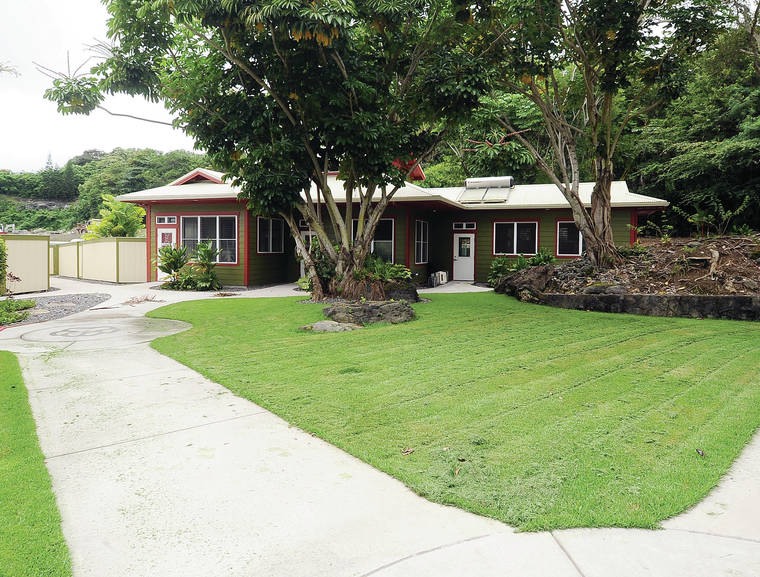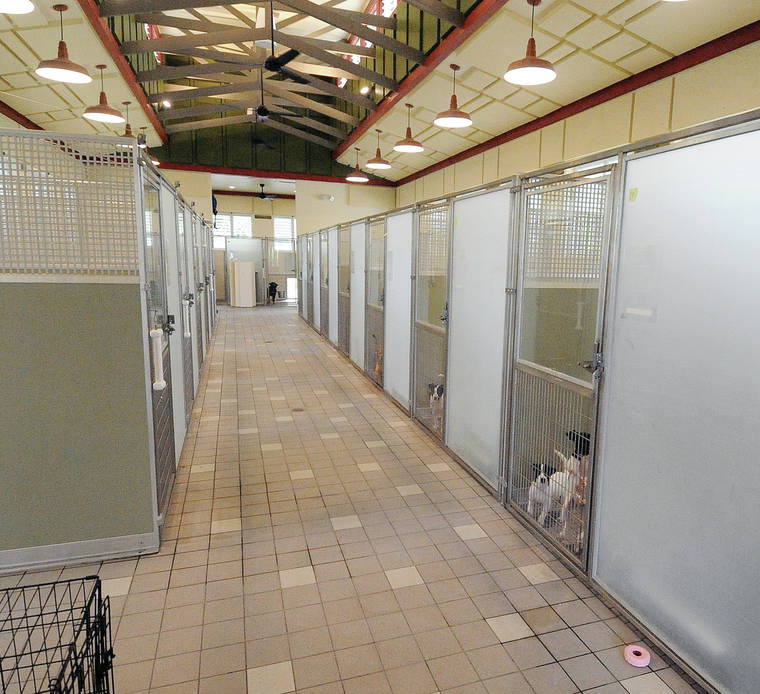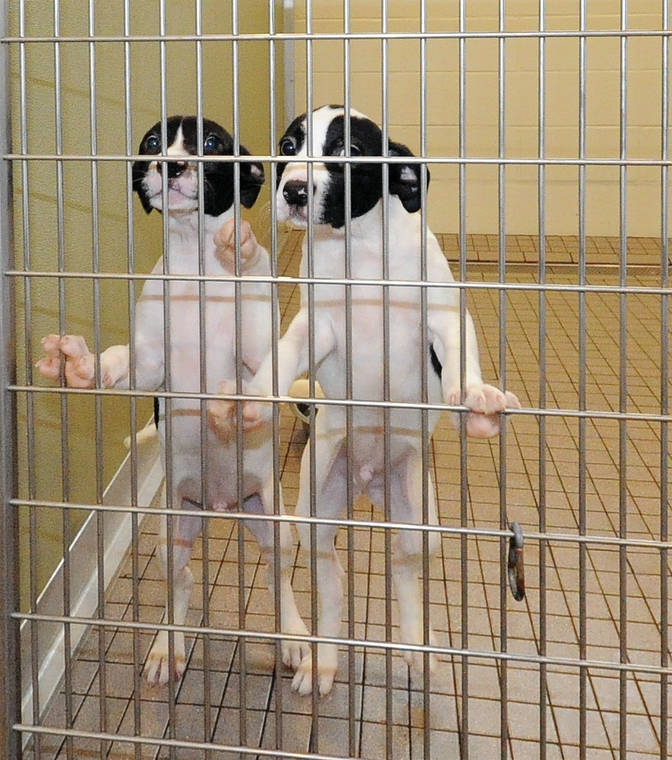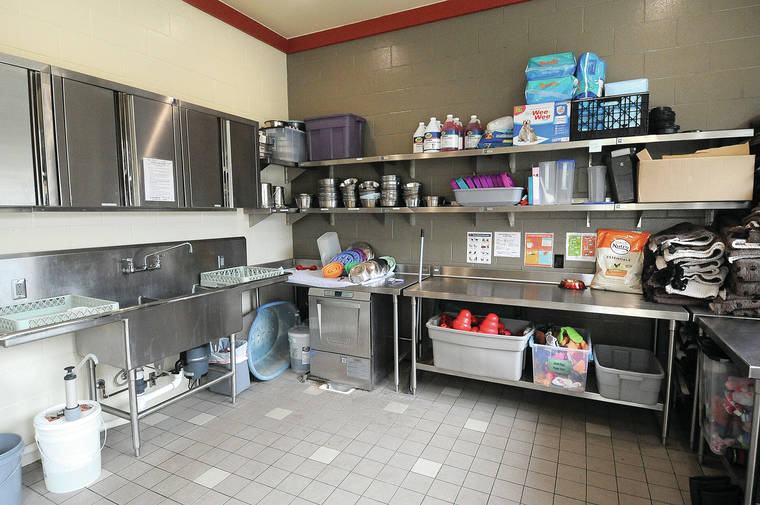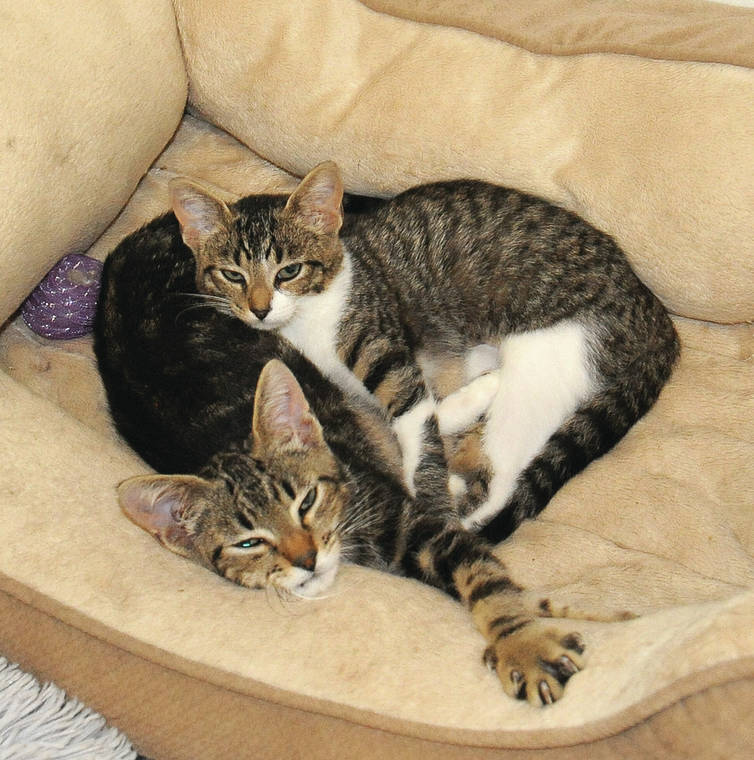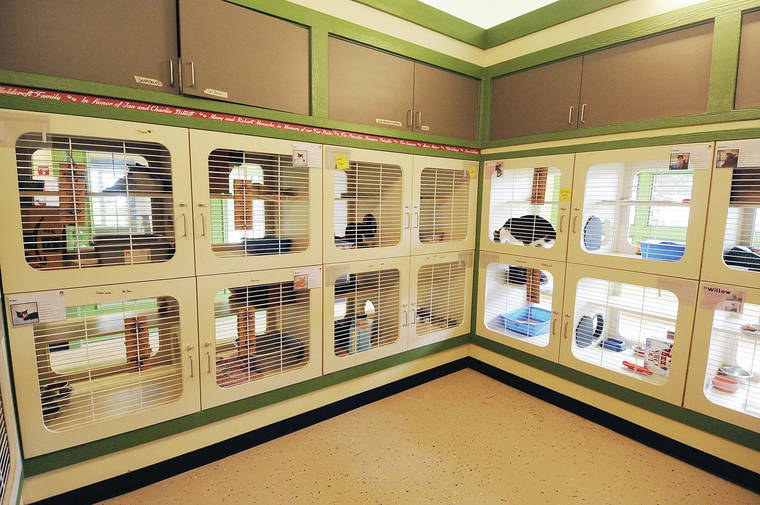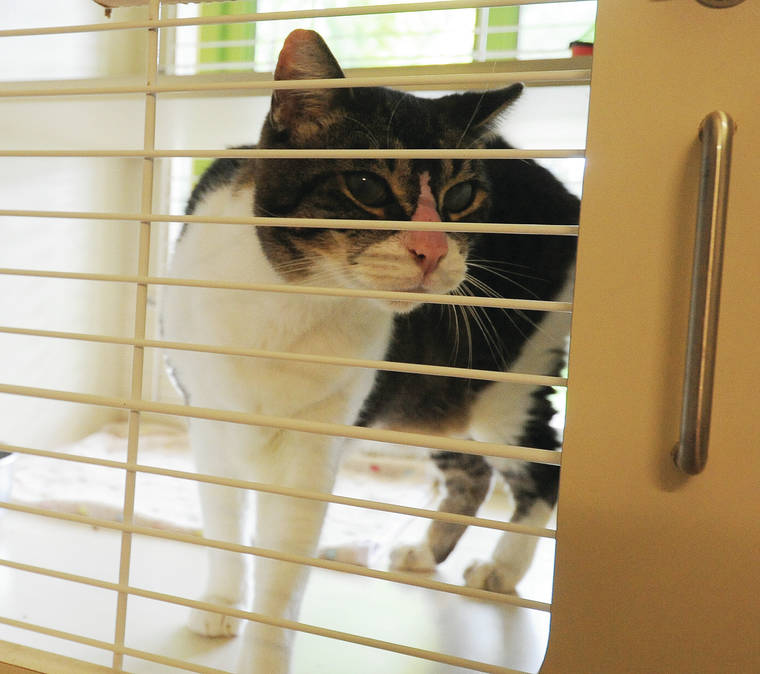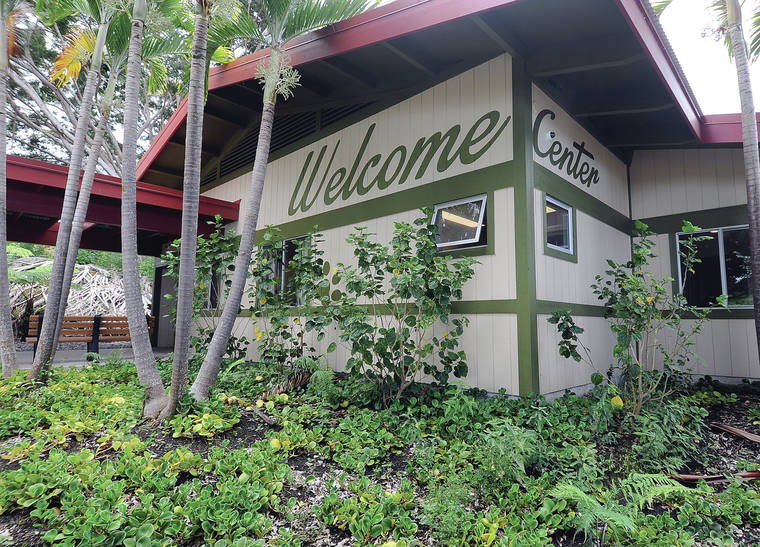The Hawaii Island Humane Society is looking forward to opening its two shelters to the public in August.
The nonprofit’s Animal Community Center in mauka Kona is slated to open to the public on Sunday, Aug. 1 with the Keaau shelter reopening on Sunday, Aug. 15. Both shelters will be open from 10 a.m. to 3 p.m.
“We are excited about welcoming the community back to our Kona and Keaau campuses. Given the ongoing COVID-19 pandemic concerns, the Hawaii Island Humane Society will not be doing a ‘grand opening‘ but rather a welcoming opportunity for the community to come back to reacquaint themselves with our beautiful facilities, programs and of course, our dedicated staff. Our well cared for animals speak for themselves,” said HIHS CEO Lauren Nickerson. “Our mission is to enhance the bond between humans and animals.”
Guided tours are planned at both facilities and the Hawaii Island Humane Society will have extra adoption counselors on hand to work with families looking for happy pet matches. It is highly recommended that folks looking to adopt start the adoption process online at home. Anyone interested in bringing home a new friend on Aug. 1 from the Animal Community Center in Kona will need to submit an application for review by Tuesday, July 27. Those not yet sure if they want to adopt a pet, can visit the animals on Aug. 1 and HIHS will work with them on the adoption process and schedule a pick up at a later date.
The new Kona facility located on 12 acres at 78-6767 Mamalahoa Highway hosts an education building, administration building, welcome center, cat barn, dog dorms, medical facilities and bark parks.
The welcome center included a retail shop for people and animals stocked with items that cannot be found on the island along with adoptable kittens on display.
The cat barn has five indoor/outdoor “catios” for sociable adoptable cats to make friends while they are waiting for their new home. The climate controlled barn also has a kitten room and individual cat corral units for cats that may not be sociable or when the “catios” are full. The barn also houses guinea pigs and rabbits.
“We saw a tremendous change in behavior of the cats when we moved them here from the old shelter,” Nickerson observed. “We really want to meet their social and emotional needs.”
Most of the adoptable dogs at the shelter have indoor/outdoor runs. The custom designed dog dorms also have sound panels that mitigate the sound of barking dogs, which can get very loud.
“These are luxury accommodations,” Nickerson quipped.
Also in the dog dorm is a “Real Life” room, which includes a sofa and television, modeling a living room.
“It is part of behavior and enrichment for the dogs. They can come in and hang out with a staff member or volunteer and learn about things like the TV and get out of their kennel and relax with somebody,” Nickerson said. “We have books for people to read to the dogs. It is a family-friendly space people can interact with the animals.”
Two dog dorms are currently being used to process new dogs and house a medical building until a veterinary hospital is built. Once that facility is up and running, those buildings will be able to house more dogs, expanding capacity.
Nickerson said they are currently constructing the Anne Barasch Ryan Veterinary Hospital on the north side of the property, expected to open by the end of 2022. When completed the facility will be available to the general public.
The Kona facility currently has 116 animals of the 249 pets under their care, including those being fostered.
“If people need a new home for their pet they can submit an application, and that serves a couple of goals for us,” Nickerson said. “One of our major goals is to keep pets in homes whenever possible.”
Nickerson said some people think they have to give up their pet and they don’t have an alternative.
“Our staff is trained to look at that situation and say, OK if we can provide you with training or medical care for your pet would you be able to keep your pet in the home? That is what we are going to look at first and foremost. How are we going to keep that pet in a home with people they know and love,” she said. “As beautiful as this place is and as hard working as our staff is it’s still a different environment for the animals.”
HIHS also has a service called pre-homing in which they guide people on how to re-home their pet on their own so they never have to step foot in the shelter.
“We have services we can offer where for a donation for a one time service we’ll do a full visit,” she explained. “They will get vaccinated, microchip if they need it. We get them ready to go into a new home as a healthy adoptable pet without having to sleep here in the shelter.”
Ultimately, if a pet does need to come into the shelter, Nickerson said they want to make sure that pets they take into their care are suitable for placement in a new home.
“We won’t take in aggressive dogs. We can’t take in animals who will bite our staff or be a danger to the public. We also look to see if the animal is going to be stressed in our environment,” she said. “We have a process to set everybody up for success.”
Beside their staff of 20 that run the two shelters, HIHS depends on volunteers to assist in the care of animals.
“We couldn’t bring in volunteers during pandemic and just started bringing them back last month,” she said. “Our volunteer program got completely redeveloped during COVID. We took that time to research best practices. We reached out to other shelters and did a lot of studying on what does a functional, rewarding volunteer program look like and we have now reshaped that program.”
They now have a dedicated volunteer coordinator, a new volunteer management system and an online portal where volunteers can schedule their shifts and do their training.
“We have created job positions for our volunteers. There are all different things people can do to engage with our animals,” she said. “If you don’t necessarily want to interact with animals but still want to contribute, there is a greeter position in front, data entry. We hope to have a full volunteer force.”
She said they are always recruiting new volunteers. “The more volunteers we have, the more we can do for the animals.”
HIHS is a nonprofit that relies on donations and grants to operate.
“Missing Tropical Paws fundraiser has hit us very very hard,” Nickerson said. “We have worked hard to maintain and keep the animals healthy and keep doing the work that we do. Tropical Paws accounts for at least 50% of their annual budget.”
Despite that, the team at the shelter has been able to complete the new campus.
“We are very proud of it and very fortunate to work in a beautiful place,” she said. “There is still lots of room for us to grow and we are looking to develop more things. Lots of dreams on the horizon.”
For more information, or to donate or volunteer visit www.hihs.org










